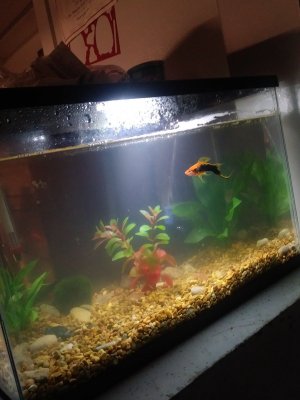also hope this thread reflects upon the hobby's inability to perform basic ammonia measures accurately, that is a key alarm here in my opinion
the reason few agree on fish-in cycling details is because we're all using test kits that can read free ammonia where there isnt any, and googling any particular name brand will show it.
contrast that to the few devices that measure ammonia digitally, how many can we find that ever posted .2ppm free nh3 at any phase of the cycle, even at the start? I bet there are 6 thousand seneye users, find and post 1 single data log showing a .1 or a .2, Ill wait

the data is that skewed. Updated ammonia measurement tools like seneye, hach lab nh3 meters, never agree our tanks hit and maintain tenths ppm free ammonia but we've all built our microbiology concepts on that happening routinely.
what we really need is good cheap ammonia test kits in the hobby. and then we'll know if fish in cycling harms fish, as people continue to fish in cycle as the new way of reefing we'd better get ready for. dont be caught making up stuff about filter bacteria, benthic or in suspension, we'll look unprepared.
the reason few agree on fish-in cycling details is because we're all using test kits that can read free ammonia where there isnt any, and googling any particular name brand will show it.
contrast that to the few devices that measure ammonia digitally, how many can we find that ever posted .2ppm free nh3 at any phase of the cycle, even at the start? I bet there are 6 thousand seneye users, find and post 1 single data log showing a .1 or a .2, Ill wait
the data is that skewed. Updated ammonia measurement tools like seneye, hach lab nh3 meters, never agree our tanks hit and maintain tenths ppm free ammonia but we've all built our microbiology concepts on that happening routinely.
what we really need is good cheap ammonia test kits in the hobby. and then we'll know if fish in cycling harms fish, as people continue to fish in cycle as the new way of reefing we'd better get ready for. dont be caught making up stuff about filter bacteria, benthic or in suspension, we'll look unprepared.
Last edited:





















